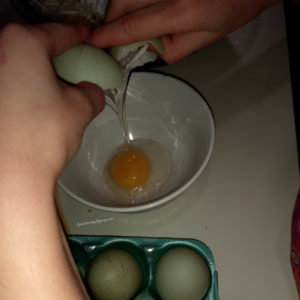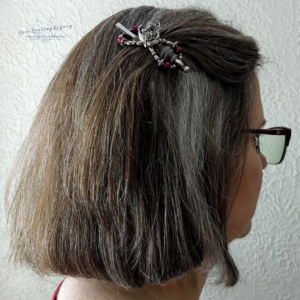How to Combat Low Vitamin D3 And Seasonal Affective Disorder (SAD)
January can be such a dreary month in Michigan. Even though we’ve had a relatively mild winter so far, and not a lot of lake effect snow band squalls, the sun rarely shines. It’s great to get out in the fresh air, and I have had a relatively easy time with balance. The driveway or in parking lots aren’t always frozen over and slippery to complicate gait/balance and vertigo issues. But, I’ve been noticing since Christmas that I’m exceptionally fatigued. I feel like I should be over that after 13-14 months brain surgery post op. I know that Vitamin D3 levels should be checked with regularity, and I’m not sure mine has ever been checked. I was glad to hear that my new primary care provider wanted to do one a few weeks ago. I was surprised to hear, however, that my levels were even lower than what they consider low. I’m now taking D3 supplements at the urging of the PCP, but also cod liver oil and calcium with magnesium to be sure that bone health is good.
Honestly, I didn’t even realize fatigue was a symptom of low D3. It’s super easy to chalk it up to “I had major brain surgery a year ago, and the tumor void is still healing.”
What are the symptoms of low Vitamin D3? (See also Healthline.)
They can be subtle, and you might even chalk them up to other problems or disorders. I’m learning that this is often the case for a lot of disorders or health issues, and that’s why it’s so important to get baseline blood work and testing to be sure the PCP can note changes.
1. Fatigue and tiredness is one.
2. Inability to lose weight.
3. Getting sick or getting infections often. One may also find wounds have difficulty healing.
4. Bone or back pain. With a low D3 level, calcium absorption is not as efficient, so bones could be weaker. This can also be a cause of bone loss.
5. Depression which may or may not be part of Seasonal Affective Disorder.
6. Hair loss.
7. Muscle pain.
Where does one get Vitamin D3?
1. Sunshine helps bodies make its own D3.
2. From certain foods like certain mushrooms, egg yolks, salmon, tuna, cod liver oil, herring, sardines, halibut, mackerel, fortified foods like orange juice, cereal, cow’s milk, and soy milk.
D3 is actually a hormone, fat soluble vitamin. You get it from food, sunshine, and supplements. According to Healthline, it may aid in the blocking of fat cell creation and storage, thereby attributing higher levels of it to greater weight reduction. It may also play a role in boosting metabolism.
While doing my research on my Vitamin D3 level and problem, I found out that many of the foods and nutrients mentioned for combatting low levels of it are also the nutrients for health hair and to grow hair.
My free 3-book, 9 Nutrients for Growing Healthy Hair can be found here. I love to share it!
Seasonal Affective Disorder
Seasonal Affective Disorder is sometimes considered the “winter blues” but it can happen any time of the year. It’s an actual cyclical depression. Some say they have SAD simply because they have low D3, but that may not always be the case.
According to the Mayo Clinic, signs and symptoms of SAD may include:
- Feeling depressed most of the day, nearly every day
- Losing interest in activities you once enjoyed
- Having low energy
- Having problems with sleeping
- Experiencing changes in your appetite or weight
- Feeling sluggish or agitated
- Having difficulty concentrating
- Feeling hopeless, worthless or guilty
- Having frequent thoughts of death or suicide
The cause of SAD is not completely known, but it is noted that circadian rhythms, low serotonin and melatonin levels seem to contribute. Family history, bipolar disorder, and major depression issues also seem to contributing factors.
The Mayo Clinic says “Treatment for seasonal affective disorder may include light therapy, medications, and psychotherapy.” Meditation, relaxation techniques, guided imagery, and music or art therapy may also help.
For either low vitamin D3 or Seasonal Affective Disorder, be sure to reaching out to your healthcare provider for the best ways to deal with your situations. Healthcare is not usually a one size fits all approach. This post should also not be construed as medical advice. It is simply my own research for understanding of my own situation.
To combat my vitamin D3 issue, my PCP recommended supplementation and diet. I’m happy to report that my fatigue symptoms seem to be lifting.
To combat any winter blues and to keep a good mental outlook, not necessarily related to Seasonal Affective Disorder, I’ve opted to create “happy places” or “pampering situations.”
I love changing out homey decorations with soothing colors, and have purchased more indoor plants now that there is no danger of my children eating poisonous leaves. I also love to listen to soothing music and create through crocheting, sewing, or crafting. There is nothing as encouraging as finishing projects! Adult coloring books are a fun activity while relaxing in the evenings too.
As always, I love keeping my mind active through reading and research of topics that interest me. I love that my nursing license credentials come due at the end of January so that I have to be sure I’ve completed enough continuing education credits. I love researching health issues related to myself or my family.
I get monthly massages, eat right, and drink plenty of water. I also try to exercise. And, of course, I am my own best customer when it comes to having new Lilla Rose hair accessories to beautify my hair and brighten up my outlook.
How do you combat winter blues?
Tell me!












